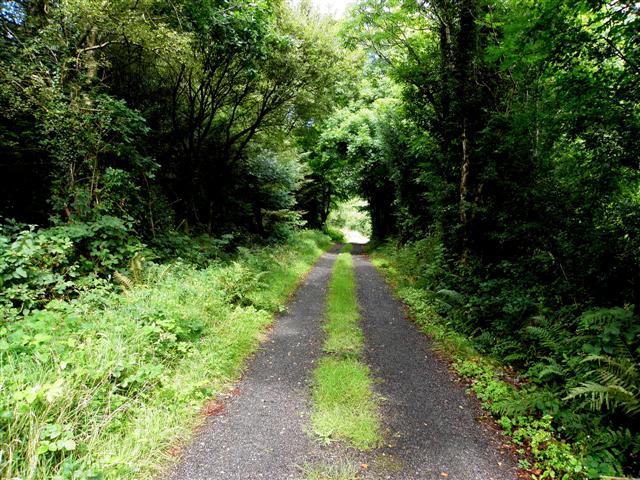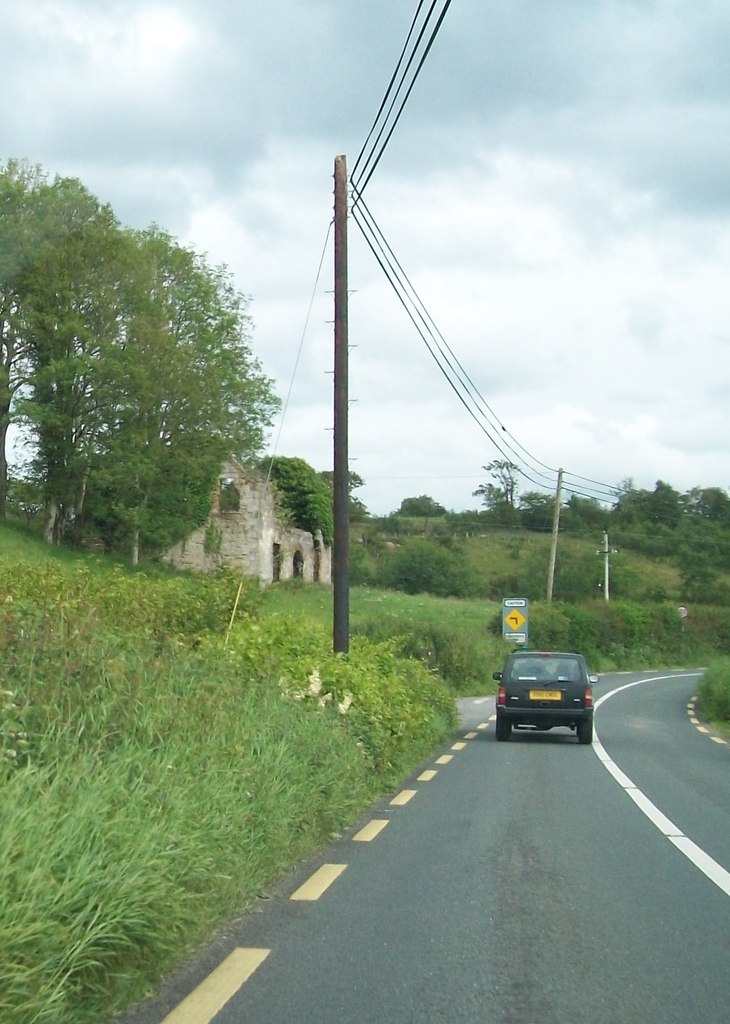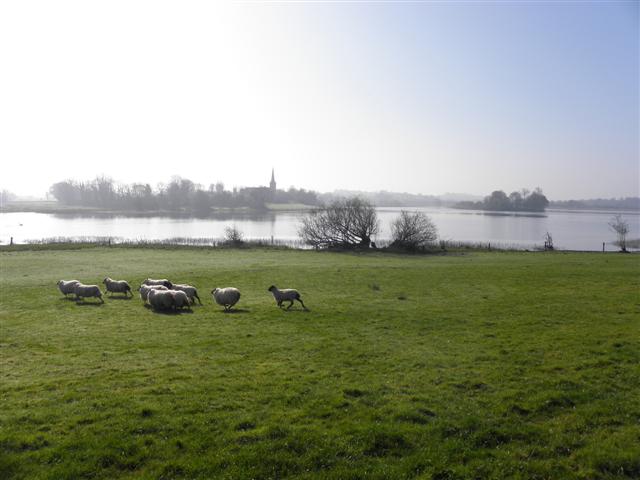|
Erraran
Erraran ( (i.e. Brackley Lake) is a townland in the civil parish of Templeport, County Cavan, Ireland. It lies in the Roman Catholic parish of Templeport and barony of Tullyhaw. Geography Erraran is bounded on the north by Derrymony and Killyneary townlands, on the west by Tirnawannagh and Gortnacargy townlands in Corlough parish, on the south by Newtown, Templeport and Kilsob townlands and on the east by Bawnboy townland. Its chief geographical features are Brackley Lough, Lough Namoyle (Loch na Maoile = The Lake of the Bare Hill), a stream and dug wells. Erraran is traversed by minor roads and rural lanes. The townland covers 155 statute acres. History In medieval times the McGovern barony of Tullyhaw was divided into economic taxation areas called ballibetoes, from the Irish ''Baile Biataigh'' (Anglicized as 'Ballybetagh'), meaning 'A Provisioner's Town or Settlement'. The original purpose was to enable the farmer, who controlled the baile, to provide hospitality for tho ... [...More Info...] [...Related Items...] OR: [Wikipedia] [Google] [Baidu] |
Erraran
Erraran ( (i.e. Brackley Lake) is a townland in the civil parish of Templeport, County Cavan, Ireland. It lies in the Roman Catholic parish of Templeport and barony of Tullyhaw. Geography Erraran is bounded on the north by Derrymony and Killyneary townlands, on the west by Tirnawannagh and Gortnacargy townlands in Corlough parish, on the south by Newtown, Templeport and Kilsob townlands and on the east by Bawnboy townland. Its chief geographical features are Brackley Lough, Lough Namoyle (Loch na Maoile = The Lake of the Bare Hill), a stream and dug wells. Erraran is traversed by minor roads and rural lanes. The townland covers 155 statute acres. History In medieval times the McGovern barony of Tullyhaw was divided into economic taxation areas called ballibetoes, from the Irish ''Baile Biataigh'' (Anglicized as 'Ballybetagh'), meaning 'A Provisioner's Town or Settlement'. The original purpose was to enable the farmer, who controlled the baile, to provide hospitality for tho ... [...More Info...] [...Related Items...] OR: [Wikipedia] [Google] [Baidu] |
Derrymony
Derrymony () is a townland in the civil parish of Templeport, County Cavan, Ireland. It lies in the Roman Catholic parish of Templeport and barony of Tullyhaw. Geography Derrymony is bounded on the north by Prospect, Corlough townland, on the west by Tirnawannagh townland in Corlough parish, on the south by Erraran townland and on the east by Killyneary and Brackley, Templeport townlands. Its chief geographical features are Brackley Lough, streams, forestry plantations and dug wells. Derrymony is traversed by minor public roads and rural lanes. The townland covers 254 statute acres. History In medieval times the McGovern barony of Tullyhaw was divided into economic taxation areas called ballibetoes, from the Irish ''Baile Biataigh'' (Anglicized as 'Ballybetagh'), meaning 'A Provisioner's Town or Settlement'. The original purpose was to enable the farmer, who controlled the baile, to provide hospitality for those who needed it, such as poor people and travellers. The bally ... [...More Info...] [...Related Items...] OR: [Wikipedia] [Google] [Baidu] |
Newtown, Templeport
Newtown is a townland in the civil parish of Templeport, County Cavan, Ireland. It lies in the Roman Catholic parish of Templeport and barony of Tullyhaw. Etymology The original Irish name was ''Tamnach Mac Cailín'', meaning 'McCallan's Pasture'. The McCallans were Scottish gallowglasses who were employed as soldiers by the McGovern chiefs. The townland name was changed to 'Newtown' by the landlord, sometime in the 18th century. Geography Newtown is bounded on the north by Erraran townland, on the west by Gortnacargy townland in Corlough parish, on the south by Owengallees and Lakefield, Templeport townlands and on the east by Kilsob townland. Its chief geographical features are Lakefield Lough, forestry plantations and dug wells. Newtown is traversed by minor roads and rural lanes. The townland covers 94 statute acres. History In medieval times the McGovern barony of Tullyhaw was divided into economic taxation areas called ballibetoes, from the Irish ''Baile Biataigh' ... [...More Info...] [...Related Items...] OR: [Wikipedia] [Google] [Baidu] |
Gortnacargy
Gortnacargy () is a townland in the civil parish of Templeport, County Cavan, Ireland. It lies in the Roman Catholic parish of Corlough and barony of Tullyhaw. Geography Gortnacargy is bounded on the north by Tirnawannagh townland, on the south by Owengallees townland, on the west by Drumlougher and Teeboy townlands and on the east by Newtown, Templeport and Erraran townlands. Its chief geographical features are Brackley Lough, Bunerky Lough (Irish = Loch Bun Adhairc = The Lake of the Butt of the Horn, it also had an older name Moaneesk (Móin Naosgach = The Bog of the Snipe), Lakefield Lough, Lough Namoyle (Loch na Maoile = The Lake of the Bare Hill), a wood, small streams and dug wells. Gortnacargy is traversed by minor public roads and rural lanes. The townland covers 155 statute acres. History The townland was inhabited in the Bronze Age as is evidenced by the prehistoric cemetery found there.A Prehistoric Burial Site at Gortnacargy, Co. Cavan by A. B. Ó Ríordáin in ... [...More Info...] [...Related Items...] OR: [Wikipedia] [Google] [Baidu] |
Tirnawannagh
Tirnawannagh () is a townland in the civil parish of Templeport, County Cavan, Ireland. It lies in the Roman Catholic parish of Corlough and barony of Tullyhaw. Geography Tirnawannagh is bounded on the north by Prospect, Corlough townland, on the south by Teeboy and Gortnacargy townlands, on the west by Arderry and Moneynure townlands and on the east by Derrymony and Erraran townlands. Its chief geographical features are Brackley Lough, Bunerky Lough (Irish = Loch Bun Adhairc = The Lake of the Butt of the Horn), Lough Namoyle (Loch na Maoile = The Lake of the Bare Hill), forestry plantations, small streams, a spring and dug wells. Tirnawannagh is traversed by minor public roads and rural lanes. The townland covers 340 statute acres. History In medieval times the McGovern barony of Tullyhaw was divided into economic taxation areas called ballibetoes, from the Irish ''Baile Biataigh'' (Anglicized as 'Ballybetagh'), meaning 'A Provisioner's Town or Settlement'. The original pur ... [...More Info...] [...Related Items...] OR: [Wikipedia] [Google] [Baidu] |
Killyneary
Killyneary () is a townland in the civil parish of Templeport, County Cavan, Ireland. It lies in the Roman Catholic parish of Templeport and barony of Tullyhaw. Geography Killyneary is bounded on the north by Brackley, Templeport townland, on the west by Derrymony townland, on the south by Erraran and Bawnboy townlands and on the east by Carrick East townland. Its chief geographical features are Brackley Lough, forestry plantations, streams, dug wells and a spring well. Killyneary is traversed by the national secondary N87 road (Ireland), minor roads and rural lanes. The townland covers 152 statute acres. History In medieval times the McGovern barony of Tullyhaw was divided into economic taxation areas called ballibetoes, from the Irish ''Baile Biataigh'' (Anglicized as 'Ballybetagh'), meaning 'A Provisioner's Town or Settlement'. The original purpose was to enable the farmer, who controlled the baile, to provide hospitality for those who needed it, such as poor people and tr ... [...More Info...] [...Related Items...] OR: [Wikipedia] [Google] [Baidu] |
Kilsob
Kilsob () is a townland in the civil parish of Templeport, County Cavan, Ireland. It lies in the Roman Catholic parish of Templeport and barony of Tullyhaw. Geography Kilsob is bounded on the north by Erraran and Bawnboy townlands, on the west by Newtown, Lakefield and Mullaghmore, Templeport townlands, on the south by Kildoagh townland and on the east by Muinaghan and Corrasmongan townlands. The town of Bawnboy is partly situate in the north part of the townland and was sometimes referred to as Kilsob in the past, rather than Bawnboy. Its chief geographical features are Bellaboy Lough (Irish = Loch Béal Átha Buí = The Lake of the Entrance to the Yellow Ford), the Bawnboy River, a stone quarry and dug wells. Kilsob is traversed by the national secondary N87 road (Ireland), the L1037 road, minor roads and rural lanes. The townland covers 348 statute acres. History In medieval times the McGovern barony of Tullyhaw was divided into economic taxation areas called ballibetoes ... [...More Info...] [...Related Items...] OR: [Wikipedia] [Google] [Baidu] |
Templeport
Templeport () is a civil parish in the barony of Tullyhaw, County Cavan, Ireland. The chief towns in the parish are Bawnboy and Ballymagauran. The large Roman Catholic parish of Templeport containing 42,172 statute acres was split up in the 18th & 19th centuries into three new parishes, Templeport, Corlough and Glangevlin. Etymology The name of Templeport parish derives from the old townland of Templeport (which is now shortened to Port) which is the anglicisation of the Gaelic 'Teampall An Phoirt' ("The Church of the Port or Bank or Landing-Place"). The church referred to is the old church on St. Mogue's Island in the middle of Port Lake. This church fell into disuse in medieval times and a new church was built on the opposite shore of the lake. It was forfeited to Queen Elizabeth in 1590 and started use as a Protestant church in about 1610. It is very unlikely that the island church ever served as the parish church because there was only one boat available and it would have ... [...More Info...] [...Related Items...] OR: [Wikipedia] [Google] [Baidu] |
Tullyhaw
Tullyhaw ( ga, Teallach Eathach) (which means 'The Territory of Eochaidh', an ancestor of the McGoverns, who lived ) is a Barony in County Cavan in the Republic of Ireland. The area has been in constant occupation since pre-4000 BC. Located in the northwest of the county, it has been referred to as Cavan's panhandle. In 1579, East Breifne, then part of Connacht, was made a shire. The shire was named County Cavan ( ga, An Cabhán) after Cavan, the area's main town. The administration remained in the control of the local Irish dynasty and subject to the Brehon and Canon Law. In 1584, Sir John Perrot formed the shire into a county in Ulster. It was subdivided into seven baronies: *two of which were assigned to Sir John O'Reilly and *three to other members of the family; *two remaining, possessed by the septs of ** McKiernan Clan and **McGovern (a.k.a. ''Magauran'') The last one, Tullyhaw, encompassed the mountains bordering on O'Rourke's country, and was left subject t ... [...More Info...] [...Related Items...] OR: [Wikipedia] [Google] [Baidu] |
Ballyconnell
Ballyconnell () is a town in County Cavan, Ireland. It is situated on the N87 national secondary road at the junction of four townlands: Annagh, Cullyleenan, Doon (Tomregan) and Derryginny in the parish of Tomregan, Barony of Tullyhaw. Ballyconnell won the Irish Tidy Towns Competition in 1971 and was also the winner in 1975. According to the 2016 Census, the population of the town was then 1,105 persons, an increase of 4% on the previous 2011 census. Name The earliest surviving mention of the name Ballyconnell is an entry in the ''Annals of the Four Masters'' for the year 1323 A.D., which states "''Rory Mac Mahon, son of the Lord of Oriel, Melaghlin O'Seagannain, and Mac Muldoon, were slain by Cathal O'Rourke at Bel-atha-Chonaill''". Before being named Ballyconnell it was named ''Maigen'' which means 'The Little Plain' with the local ford called which means 'Ford of the Miners'. It was also named Gwyllymsbrook between 1660 and 1702 by its then owner, Thomas Gwyllym. Ballyc ... [...More Info...] [...Related Items...] OR: [Wikipedia] [Google] [Baidu] |
Census Of Ireland, 1901
A census is the procedure of systematically acquiring, recording and calculating information about the members of a given population. This term is used mostly in connection with national population and housing censuses; other common censuses include censuses of agriculture, traditional culture, business, supplies, and traffic censuses. The United Nations (UN) defines the essential features of population and housing censuses as "individual enumeration, universality within a defined territory, simultaneity and defined periodicity", and recommends that population censuses be taken at least every ten years. UN recommendations also cover census topics to be collected, official definitions, classifications and other useful information to co-ordinate international practices. The UN's Food and Agriculture Organization (FAO), in turn, defines the census of agriculture as "a statistical operation for collecting, processing and disseminating data on the structure of agriculture, covering th ... [...More Info...] [...Related Items...] OR: [Wikipedia] [Google] [Baidu] |
Griffith's Valuation
Griffith's Valuation was a boundary and land valuation survey of Ireland completed in 1868. Griffith's background Richard John Griffith started to value land in Scotland, where he spent two years in 1806-1807 valuing terrain through the examination of its soils. He used 'the Scotch system of valuation' and it was a modified version of this that he introduced into Ireland when he assumed the position of Commissioner of Valuation. Tasks in Ireland In 1825 Griffith was appointed by the British Government to carry out a boundary survey of Ireland. He was to mark the boundaries of every county, barony, civil parish and townland in preparation for the first Ordnance Survey. He completed the boundary work in 1844. He was also called upon to assist in the preparation of a Parliamentary bill to provide for the general valuation of Ireland. This Act was passed in 1826, and he was appointed Commissioner of Valuation in 1827, but did not start work until 1830 when the new 6" maps, became av ... [...More Info...] [...Related Items...] OR: [Wikipedia] [Google] [Baidu] |









